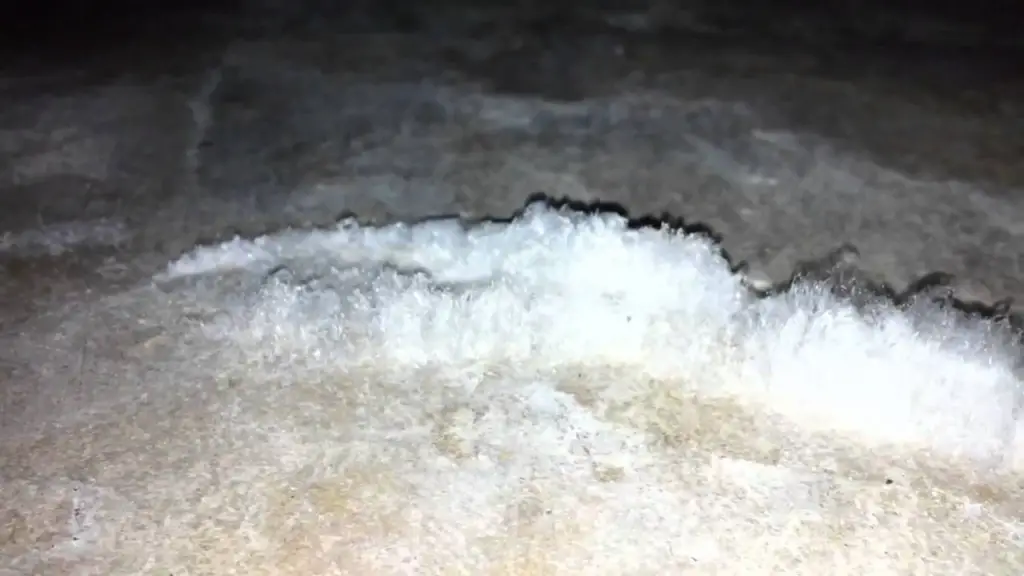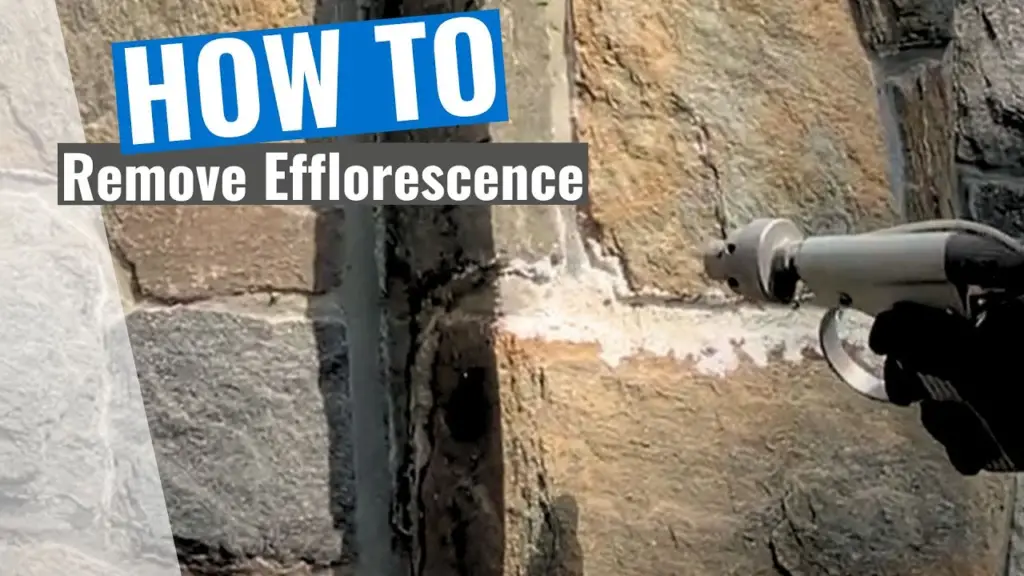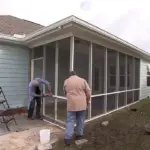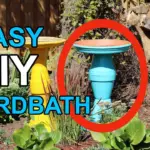So, you’ve getting the white fuzz growing out of your concrete floor or in your basement foundation and are wondering what that actually is.
I got a lot of my clients asking; “Hey, I’ve got this white stuff that’s coming through my concrete walls, my concrete ceiling, and I don’t know if it’s mold. What is it?”
The white fluffy substance or fuzz is called efflorescence. When it combines with black spotting walls; it’s called white fluffy mold. It’s actually that when the moisture moves out of the concrete and evaporates, it leaves the salt deposits on the surface called efflorescence.
Dealing with this white fuzz is annoying and cumbersome. Not all homeowners know how it can impact your health and how to actually prevent its growth.
So, keep reading and don’t miss a hint. In our today’s blog; I’ve tried to cover all the aspects of efflorescence or white fluffy mold grown on concrete walls and surfaces.

What is the white fuzz growing out of my concrete?
A lot of homeowners often confuse the efflorescence with mold. While mold is extremely harmful as it can cause allergies and asthma issues; but efflorescence or that white powdery substance has no harm. But this high moisture issues or water on your basement walls or floors is an indication of a serious trouble.
So, while you had these white patches in your basement, you start wondering: Should I get away from the mold? Or should I touch it or not? Or maybe I’ll ding it!
But if it’s just the white fuzz growth; and its efflorescence; you don’t have to worry. It’s not a mold or fungus. You may have some moisture problems recently, and this is what’s left over. It can form on brick surfaces, concrete, stone walls, chimneys, anything that’s masonry.
Efflorescence, it sounds like a fungus or a mold, but it’s not. It’s actually the exact opposite process of how mineral deposits are left when water is evaporated. These formations are caused by salts that are being pressed through a surface from the other side through moisture.
Like Us on Facebook!
Some of these are fairly large formations and can grow as thick as your fingers. Moreover, it’s not much of a nuisance in comparison to mold, I mean, pretty easy to clean up. There are some solvents out there and some concrete sealers that will prevent this from happening.
Subscribe Us on YouTube!
So, if you see something growing in your basement and it looks thick white fuzz, it’s not mold. It’s just carried by moisture. You know, these loose carpet threads are more of a nuisance than these salt piles, so really interesting phenomenon.
Also Read: What is Efflorescence? Causes, Prevention and Removal Techniques

What Causes White fuzzy mold?
What happens is that there are salts that can be in the mortar or in the brick or in the stone, and when they get wet, those salts actually go into solution. You know, they dissolve just like sugar might dissolve in your iced tea or your coffee.
And when the water comes to the surface, let’s say the water soaks into a chimney, into a mortar joint, or into the brick, and it dissolves some of the salts.
And then when the water vapor and the water start to come to the surface, the water evaporates, but you know what? The salt stays behind, and those are the salt deposits you see.
How to treat or prevent efflorescence?
So, how do you get rid of white mold on concrete? Well, Efflorescence is very fluffy; you can easily brush it away with a broom, and it’s easy to clean up.
Don’t wash it!
The worst thing you can do if you’re trying to get rid of efflorescence is don’t try to wash it away with water. Because all you do then is you dissolve the salt back into the water. The water soaks back right into the brick, stone, or your patio, your concrete.
And then when it dries, there, your salt comes back again. It’s like a conveyor belt, you know, never-ending. So, don’t do that. Just brush them away. And eventually, what happens is eventually you exhaust the salts out of the brick or the stone, and then you won’t have the problem anymore.
Also Read: How to Get Carpet Glue Off Concrete? (6+ Methods Step by Step Guide)
Use asphalt or bitumen coating to prevent it
The best thing you can do here is stop the moisture or water from coming to your wall. You definitely want to figure out where that water is coming in and make sure you waterproof it so you can stop the structural integrity compromising the concrete here.
Sometimes the moisture comes through the roof, or through the leakage in plumbing, or you can have it on basement from the backfill.
This can also happen on retaining walls where the soil behind the retaining wall is the source of the salt. In which case, the efflorescence will never stop. So what you have to do if you build a retaining wall is you have to waterproof the back of the retaining wall with some type of asphalt solution so that the water can’t get into the wall in the first place.

Sandblasting and using water proofing paint
- Clearing the surface: Sandblasting is a great way to remove all of the peeling and get it down to concrete.
- Cleaning: Once you do that, then you want to acid or chlorinate and clean the surface really well.
- Use Densifier: Then you want to heat dry it or allow it to dry really well. Once you allow that to dry, that’s when you want to apply a densifier. It’s a clear liquid that soaks into the concrete substrates, and it acts like glass.
- Water proofing paint: Once it cures, it’s going to stop that efflorescence from seeping through. You can now apply the waterproofing paint that won’t allow that water to seep through. It actually prevents water from seeping in, causing this issue again.
Also Read: Can you paint concrete pavers? (Including Staining)
Paint it – Use Vinyl Concrete patch & Use Epoxy Paint
It needs to keep the moisture from getting down into the concrete and causing the water to sit in there. And then, of course, feeding the growth, which is called efflorescence. And it is a fungus, believe it or not, that grows out of concrete. So, here’s what you should do:
- Wash with acid not water – Try to wash the whole thing with some acid, actually, I’ll say one part acid, three parts water, and the same kind of acid used in a swimming pool, wash the whole thing down.
- Prepare the area: If you have areas that you want to skim float and make smooth, you can use a vinyl concrete patch.
- Paint it: Once that’s cured overnight or a day or so, then you come back with a two-part epoxy paint, and you paint it, and you’ll never have that problem again.
So, if you see the white fluffy mold, you just have to brush it away, and it’s totally harmless. Doesn’t hurt the masonry surface whatsoever.
Also Read: How To Clean Concrete with TSP – Trisodium Phosphate?
Should I just Clean & Don’t Treat?
No! If you won’t treat the moisture, you’re calling for trouble. The moisture can compromise the structure of your masonry or concrete. In case of concrete, the moisture can penetrate causing rusting of rebar. So, while it’s in there, it can eventually eat the concrete exposing the rebar.
You can see huge amount of efflorescence there but that’s the extreme case. But it’s always best to stop the moisture as it can cause things to compromise.
All right, so when it comes to this degree, you definitely want to figure out where that water is coming in and make sure you waterproof it so you can stop the structural integrity compromising the concrete.
Conclusion
So guys you see how bad this white fluffy mold is; it’s time to use a method I’ve shared above to get that annoyance out. I’m hopeful that all the tips here are helpful. Leave your comment below and subscribe to my newsletter for more such interesting updates.

















